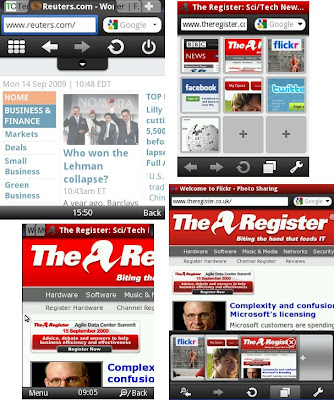 Here is an old posting on Parlay/OSA that might be useful to put things in context.
Here is an old posting on Parlay/OSA that might be useful to put things in context.An important development related to service evolution is operators making interfaces available to external applications for information and control. Two widely deployed capabilities today include location queries and short message service. With location, mobile devices or external applications (e.g., applications operating on computers outside of the network) can query the location of a user, subject to privacy restrictions. This can significantly enhance many applications including navigation, supplying location of nearby destinations (e.g., restaurants, stores), location of friends for social networking, and worker dispatch. With SMS, external applications can send user requested content such as flight updates.
Until now, the interfaces for such functions have either been proprietary, or specific to that function. However, there are now interfaces that span multiple functions using a consistent set of programming methods. One set is the Parlay X Web Services, a set of functions specified through a joint project of the Parlay Group, the European Telecommunications Standards Institute (ETSI) and 3GPP. The Open Mobile Alliance (OMA) now manages the Parlay X specifications. Parlay X Web Services include support for location and SMS, as well as many other functions with which developers will be able to build innovative applications.
Table 4 (above) summarizes the available Parlay X specifications. Operators are beginning to selectively deploy these functions. The advantage of this approach is that developers can build applications that are compatible with multiple operator networks.
A related project is GSMA OneAPI, a GSM Association project to also define network interfaces, but that prioritizes implementation based on expected market demand. OneAPI defines a simplified Web service for most functions that is essentially a subset of the related Parlay X Web service. It also defines a REST (Representational State Transfer) interface for most functions as an alternative to using the Web service. RESTful interfaces are simpler for developers to work with and experiment with than Web services.
Regardless of whether operators deploy with Parlay X or OneAPI, these are mainstream interfaces that will open wireless networks to thousands of Internet programmers who will be able to build applications that leverage the latent information and capabilities of wireless networks.












